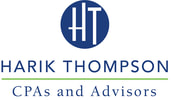|
As we emerge from the pandemic and begin to find new ways of operating in the world, businesses are debating whether to bring employees back to the office, have them stay remote or develop a hybrid model. The decision will impact many areas of the business. As business leaders make this challenging decision, they will find themselves reassessing their overhead costs. Overhead costs are ongoing business expenses not directly attributable to a specific product or service. The price a company charges for a product or service is, in part, determined by the amount of its overhead.
Businesses' expenses fall into three major categories: fixed, variable and discretionary. Fixed expenses are overhead costs that are incurred regardless of whether a product or service is produced, such as rent and mortgage payments, utilities, insurance, and property taxes. They do not fluctuate with business activity. For example, businesses such as restaurants, which were largely shuttered during the pandemic, had to pay their fixed costs even when their businesses were closed. Variable expenses, which are not considered part of the overhead costs, are expenses incurred in making goods. For a restaurant, that's the food and labor that they weren't paying for when the business was shuttered. The last type of expense, and the other part of overhead costs, is discretionary expense, or spending on things that the owner doesn't need in order to stay open: décor, advertising, live music and all the other wonderful things we used to enjoy that fell by the wayside during lockdown. So as businesses shut down operations and pared their spending down to the bone, fixed expenses stood alone, and owners may well wonder how they can cut expenses even further. As companies review their overhead costs, they may realize they can significantly reduce them.
Any decisions company leaders make during this assessment need to be strategic. Short-term fixes inevitably have long-term repercussions. Giving up a lease in a prime business area may be the right decision today, but it may not be the best decision for a business that expects most employees to be back at the office in a year. Comments are closed.
|
Newsletter articles are posted every 2 weeks. If you would like to have our e-newsletter delivered directly to your inbox, please sign up. Your information is confidential; you can unsubscribe at any time. Subscribe. Categories
All
|
Proudly powered by Weebly

 RSS Feed
RSS Feed